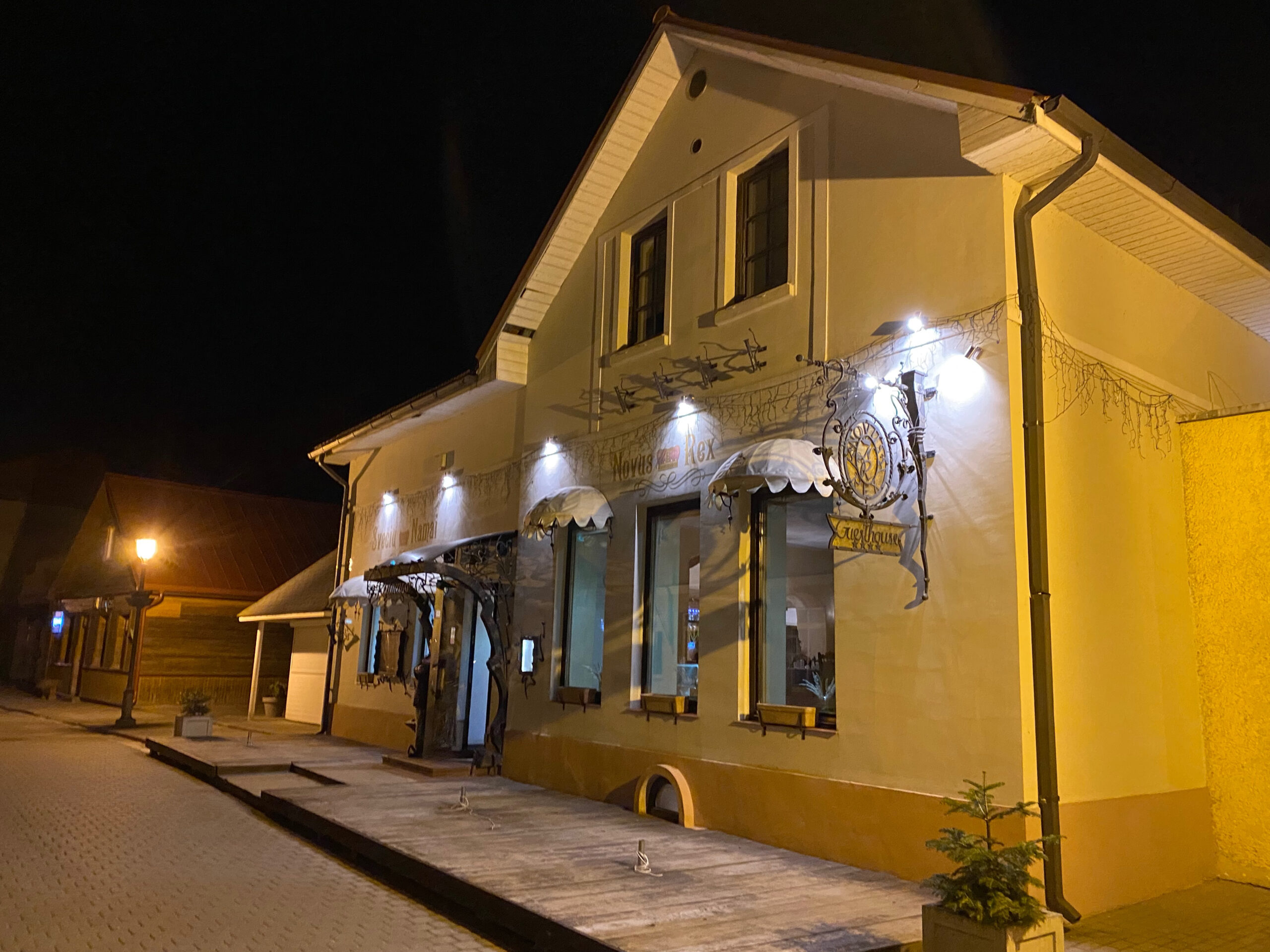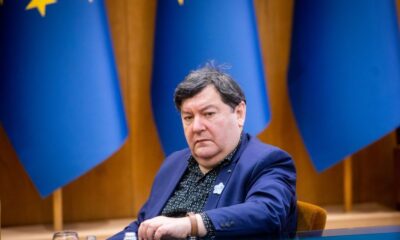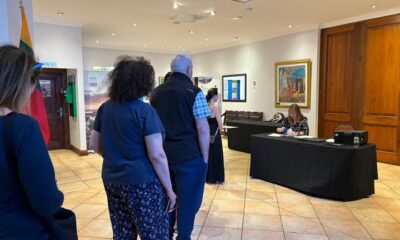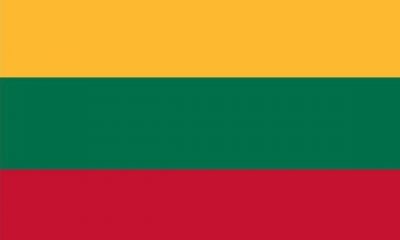
Personal Story

Keidan lost and found and lost again
I grew up hearing about “der heim” from my grandfather, referring to this far off Baltic country called Lithuania. Most South African Jews did, but I never imagined spending time in Keidainiai (or Keidan, as I grew up calling it), in the town that my grandfather, Jankel Krost, and his family grew up in. I certainly didn’t foresee spending a night on the property where they lived that had been owned by my great-grandfather, Zalman Krost.
Today, it’s a guesthouse, so it was possible.
As I lay in a bedroom in the building, I wished the walls could tell me what they recalled from the days my grandfather and his siblings were children here. I wondered what they were like.
I remember them only as elderly folk, but when they lived here, they had their lives ahead of them. They had dreams and adventures to experience.
They had an expectation of adulthood, marriage, and families in this town and country, but it wasn’t to be. Fortunately, they got out of Lithuania before the mass killings of the entire Jewish population of Keidan in 1941, but that didn’t mean life was always easy for them.
They spoke Yiddish to each other, and they lived among Keidanian gentiles. I had so little knowledge about what that was like or how they were treated. I just know that my great-grandfather was a master metal worker who did work for the “who’s-who” of Russian aristocracy while Lithuania was under the Tsar.
He was also deeply involved in and respected as a leader in the Keidan community, having been the founder of the town’s Linat Hatzedek (an organisation providing lodging for the poor), a member of the Chevrah Kadisha committee, and the president of Keidan’s big synagogue.
I also knew that in 1915, the whole family, along with the other Jews in the country, were forced to go to Russia for a few years, leaving all they owned behind. When they were finally allowed to return, I understand that their homes had been ransacked and belongings stolen. It was then that my family began considering leave der heim.
I had hoped that being in this house, I would, by osmosis, have a sense of their lives and develop a connection to their history. I thought that by walking through the streets, I would feel a closeness to them and their childhood experiences.
However, I soon realised that the soul of a place has nothing to do with its history, but rather the people who inhabit it now.
Though there are indicators everywhere in Keidan of the former presence of Jews – who before 1841 made up almost 60% of the population – there was no sense their presence now. The Yiddishkeit we bring to a place was totally absent.
There haven’t been Jews in Keidan since the entire population of 2 076 was marched out of the city, their clothes and belongings taken from them, lined up in front of a huge pit, and murdered.
In spite of the fact that more than half the town’s population suddenly disappeared and their belongings and homes were grabbed and enjoyed by whoever got there first, nobody at the time spoke about the bizarre disappearance of the Jewish population.
We’re led to believe that for 50 years, which included the rest of World War II and the years that Lithuania was under Soviet rule as part of the Union of Soviet Socialist Republics, nobody spoke about the Jews.
It was only once Lithuania regained its independence in 1991 that we’re told they began to uncover what had happened and started to discuss this devastating travesty. It has, however, been documented that though there was a Nazi or two who ordered the killings, the people who did most of the shooting, barring Jews from escaping, and preventing witnesses, were Lithuanian activists or soldiers and gentiles from Keidan. Neighbours. Customers. Teachers. Even people the Jewish Keidanians thought were friends.
This repulsive scar remains in Keidan, or at least I felt it, being family of those whose names were on the list of those murdered. Four of my family members’ names appear on the metal memorial to those murdered at the killing field.
Through my day there, I was guided through the streets to see where Jewish shops and homes had been. I visited the three synagogues there, including both the summer and winter ones. I was shown the ramshackle house, once owned by Jews, that had a shutter on the roof on an outhouse specifically to use for Sukkot.
I visited Jewish Street, the building that was once a Jewish-owned movie house, and was told which areas were predominantly Jewish. It was clear we had a huge presence.
My guide, Rimantas Zirgulis, the director of the Keidainiai Regional Museum, was sympathetic and kind, but the horror perpetrated by the people from his home town was clearly not easy for him to speak about. However, he did much to keep alive the memory of the Jews of Keidan. No matter how tough the questions, he answered with respect and care.
He took me to the Jewish cemetery, where I found another relative of mine, Yosef Gershon Krost, who had at least been allowed a dignified death and burial.
I later learnt that the Jewish graves had been cleaned and maintained by the Keidan senior high school students as a project to learn about the Jews of their town. The teacher behind this, Laima Ardaviciene, then organised for the students to photograph and read each gravestone to document who and when Jews had died.
She also got them to draw a tree of life on the back of her classroom which had the names of all the Jewish families who had once lived in Keidan. She did this to enhance their education of the Holocaust and help them internalise what had been a thriving Jewish life. She wanted to keep alive the memory of a community that was forever gone from the town.
I was looking forward to meeting the owner of the property that had once belonged to my great-grandfather. I wanted to find out as much as I could about its history.
The owner, who told me that he was born in 1991 and had bought the property just 13 years before, knew little about its history.
However, sitting opposite me, knowing my history, he told me how he felt about the Jewish community. They were anti-progress, he said, citing an example of Lithuanians needing to build a road and the Jews making a big noise about stopping it “because they needed to check whether there were bones there”. The bones he was talking about were those left in mass graves from the 220 0000 Jews murdered in 200 sites around the country.
He went on to tell me that if they didn’t like what was happening in Lithuania, they could leave. He said Jews needed to let go of the past, and move on. He told me his mother had also lost people during Soviet times, but she had moved on. “The Jews also need to move on. They can’t expect people to make special allowances for them because they lost people. They need to stop feeling sorry for themselves and move on.”
I guessed he was referring to the 220 0000 Jews who were “lost” when they were rounded up and brutally tortured and murdered. Amazingly, this young man appeared not to realise that what he was saying was offensive to me.
Shocked, I wondered if his attitude was unusual in Lithuania.
I’m so grateful that my family’s soul is no longer in that building because I would hate for it to have to share space with people like that.
As much as I’m grateful to have gone back to my roots in Keidan, I won’t be returning in a hurry, thanks to one young man.











David Schlapobersky
April 22, 2023 at 11:31 am
Greetings from Swellendam in the Southern Cape.
Thank you so much for this!
It is such a well-written and telling account of your journey back to Lithuania.
My grandfather came to this country from Keidan (Keidainiai)almost 120 years ago.
With warm appreciation and thanks
David Schlapobersky
Michael Davidson
April 25, 2023 at 3:49 pm
I wonder how all the SA Jews would think about new Lithuanian passport, after reading this
Jennifer Chesler Rubin
May 5, 2023 at 7:52 am
Thank you so much for the vivid des ription of your visit to Keidan. It reminds me of mine in 1997, 2004 and 2006 when I had very similar reactions to yours. I was lucky enough to meet the late Yehuda Ronder, the last Jew from Keidan, who filled me in on many historic details. My late father, Solly, Shalom Chesler, immigrated to South Africa in 1928 to join his brother, Morris. The rest of his family, mother, married brother and sisters and their failies, are all buried in that mass grave.
Despite the good work being done by Laime and Rimantas, Keidan still arouses terrible memories.
Jennifer Chesler Rubin, Izrael.